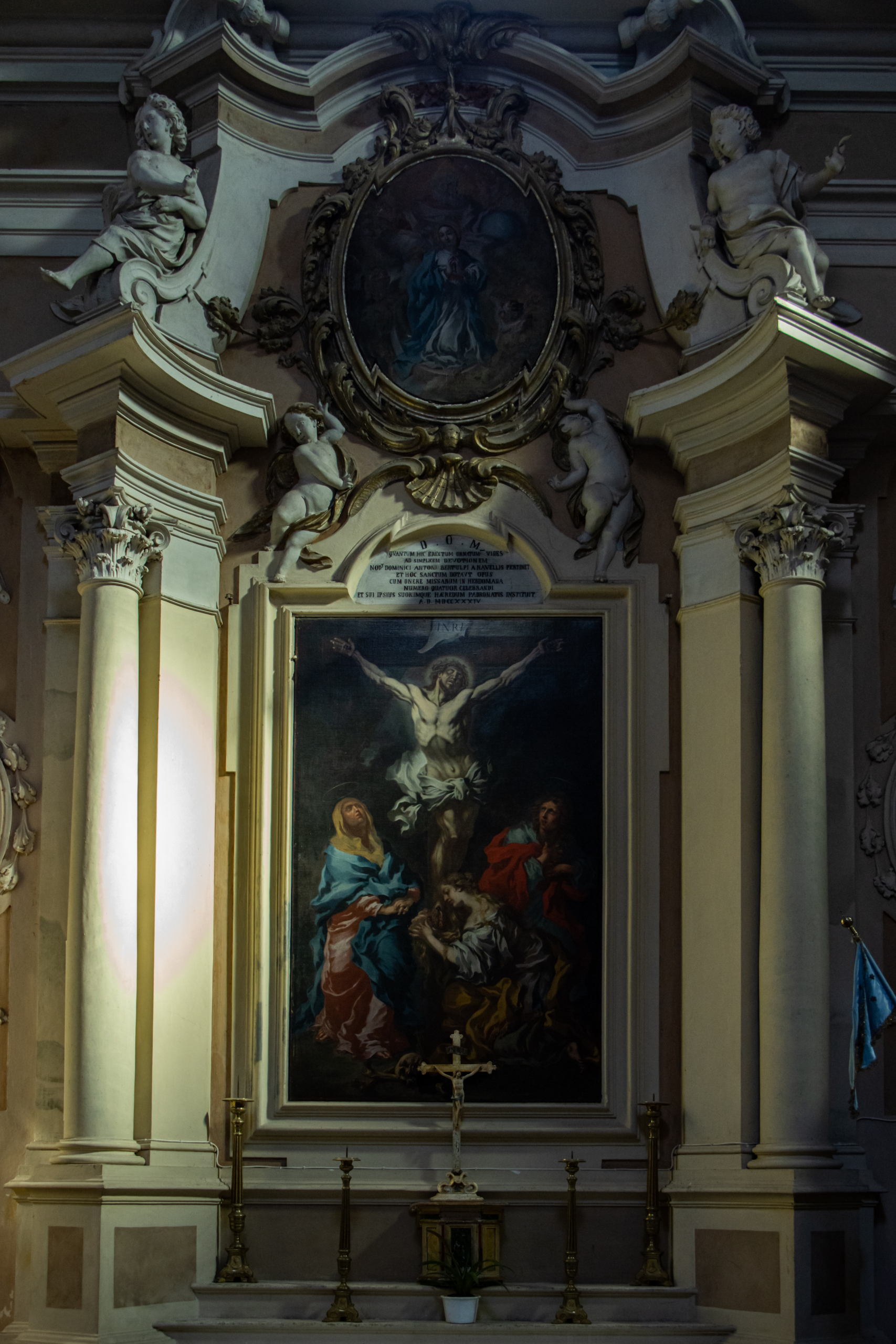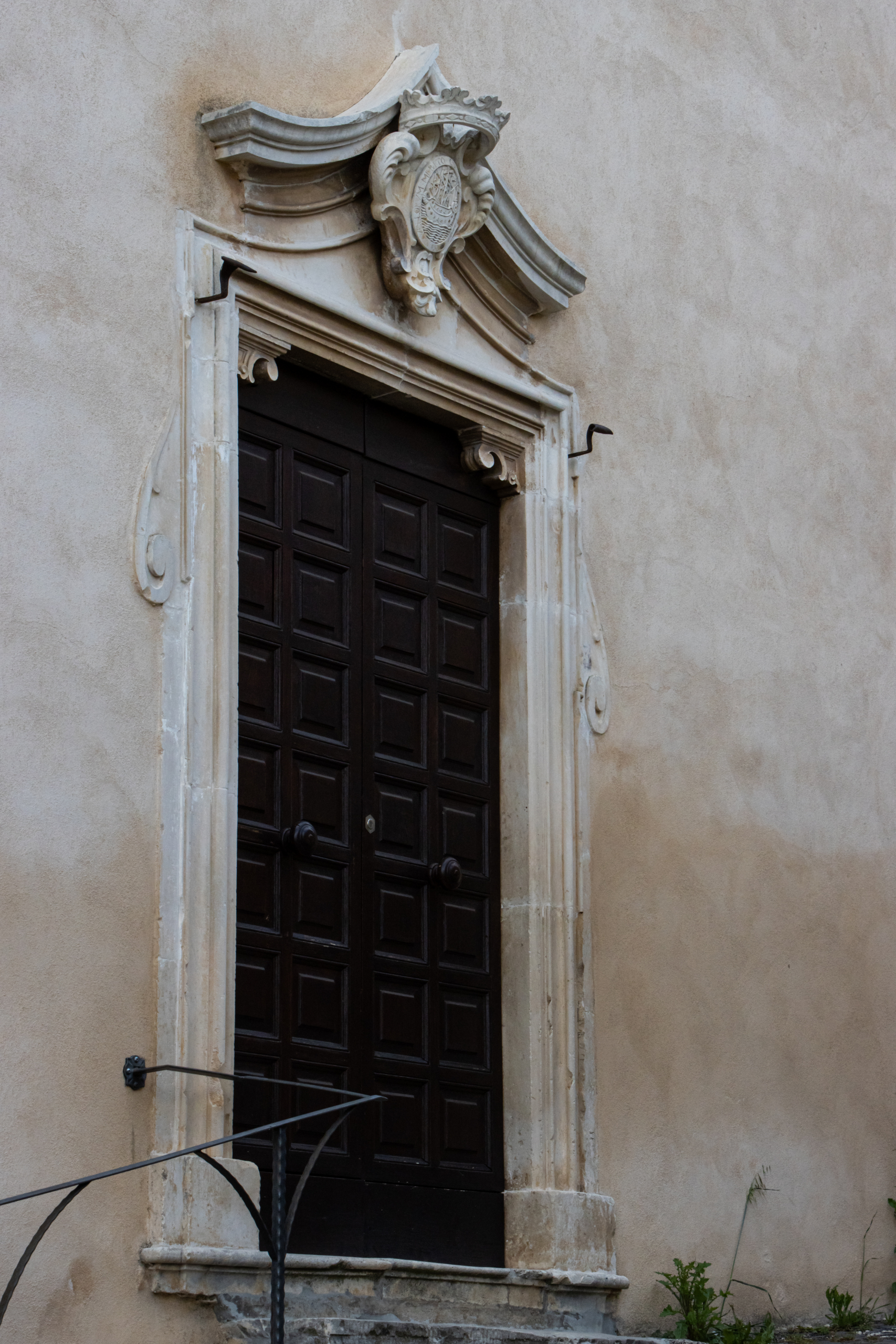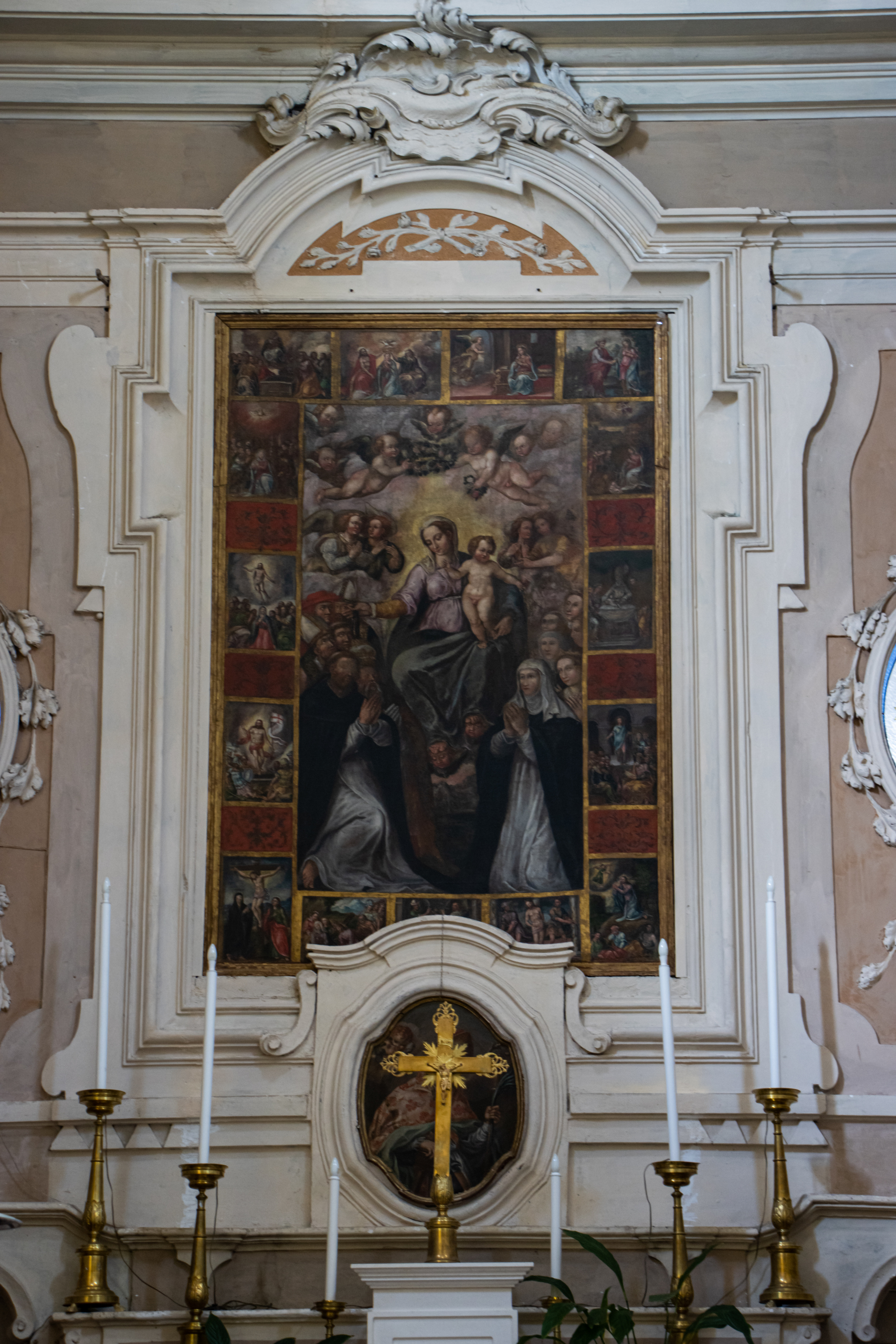It stands on the site of the Church of San Pelino, where a community of Dominican friars settled at the end of the 16th century, abolished by Pope Innocent X in 1652: since then, the church entered a state of neglect, aggravated by the plague of 1658 and the earthquake of 1703. Nothing remains of the church except the place names San Pulìnë, Piazza and Porta San Pelino. It was the care of Archpriest Francesconi to renovate it by dedicating it to the Holy Rosary, with work beginning in 1726, completed within fifty years: hence its Baroque appearance.
Above the portal, the civic coat of arms with the symbol of the ship, from which the name Navelli was believed to derive. Inside, there are six altars, enriched by paintings and stuccoes, as well as the monumental organ by Fedri, dated 1782 and recently restored. Of particular interest is the large altarpiece depicting the Crucifixion, dating back to the 17th century. The oratory of the Confraternity of the Most Holy Rosary, made entirely of wood, is annexed to the church.



